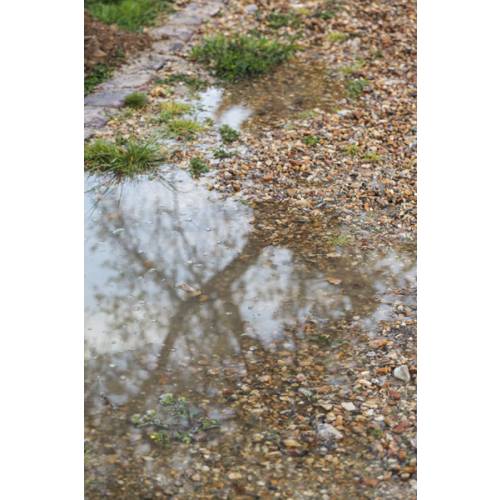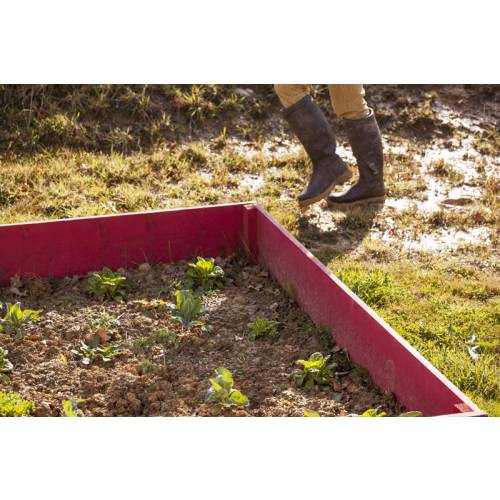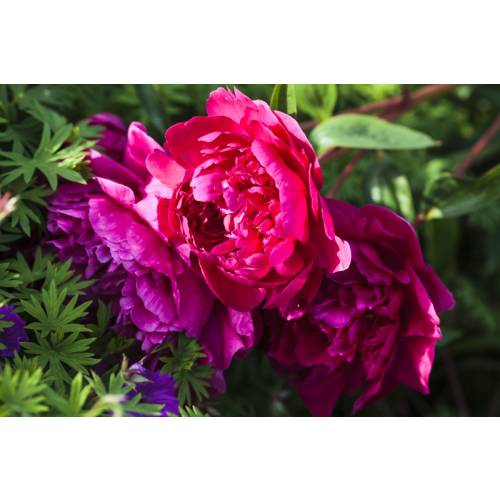
Choose plants in function of your garden
Shrubs and trees in Flood zone
- Details
-
The difficulty in land suffering from frequent flooding is that apart from the submersion’s periods, the soil can be dry. Plants which thrive in humid areas are therefore not suitable and we must look for another range of plants…
To each hollow, its puddle
The flooding of part of the garden can have different causes. Often it is a stream which overflows, like a ditch which fills up and spreads water around. The meteorological hazards lead to flooding even without the presence of a stream or river. For example, in case of strong rain, the rain from a storm will have a tendency to accumulate in the lower parts if nothing allow them to drain away further. And during the particularly wet seasons, the ground-water table can come up to an already soaked soil and increase its depth. You need particularly strong plants to put up with these changing conditions…
The first solution against this type of event consists in creating raised beds, held on their sides by planks, stones or any other material, so as to improve drainage. But this solution is only suitable if we are talking about a few centimetres of water.
Willows and ornamental grasses
Plants which are the most suited to temporary flooding are the ones which grow around ponds which can see their level vary enormously in the space of a few weeks. Willows and Poplars which naturally colonise these ponds’ surrounds are perfectly suitable. Decorative varieties such as the Salix Integra also thrive in these conditions. Alongside, we can take example on the ornamental grasses such as the Miscanthus which withstand perfectly the fact of going from one extreme to another. A lot of ornamental grasses, if not all, withstand to spend 15 days under water or in saturated soil. The Sedges (Carex), The New Zealand Flax (Phormium) and Horsetail also count in their ranks perfectly suitable plants for these conditions
Plants to avoid
In areas where the soil is likely to become so waterlogged that the plants are going to be submersed, avoid growing thick-leaved or soft-tissue plants. Rhubarb, Peonies or Hostas for example risk rotting with a prolonged contact with water. And when the flooding episode has ended, they risk suffering from the return of warmth and dryness.
Other plants are stagnant-humidity intolerant for more than a few days, particularly conifers (except the Bald Cypress- Taxodium distichum). Evergreen shrubs such as privet and Elaeagnus (Oleaster) do not thrive in this condition which weakens them quickly. Finally you must avoid growing plants which have fragile roots like Roses which do not like having their roots asphyxiated.
A few tips for fewer worries
Dig some draining channels like small ditches 10cm deep from the ground surface so as for the water to drain away more rapidly after the flooding episode. You can gain one to two days which can make a big difference to numerous plants. If this ditch is troublesome fill it with draining pebbles.
Do not hesitate to cut back the plants which have been submersed. This will encourage them to produce clean, new foliage and they will be forced to soak up water from the soil, and accelerate its drying up.
Speed up the end of the roots’ asphyxia in digging a deep hole (a diameter of 30cm is sufficient) in which the surplus water will accumulate, like in a well. 2m around approximately, the ground will no longer be saturated with water. - Photos (4)




